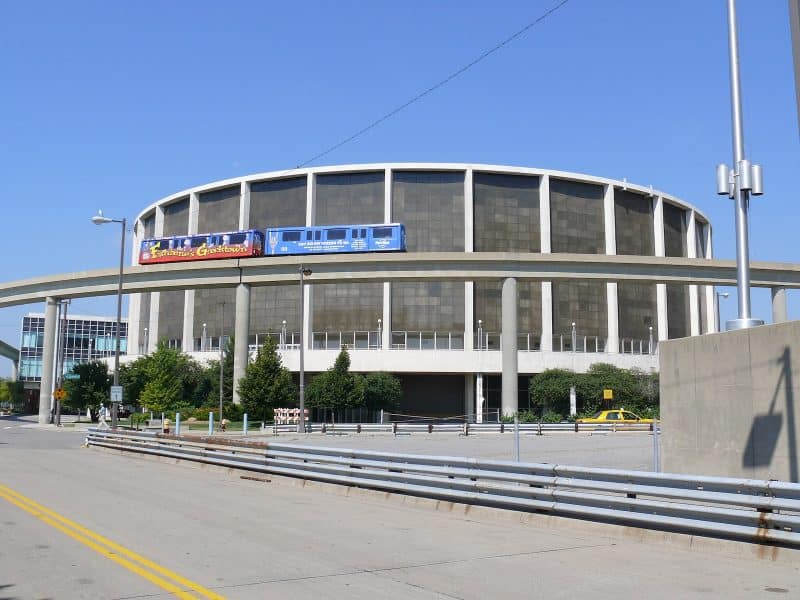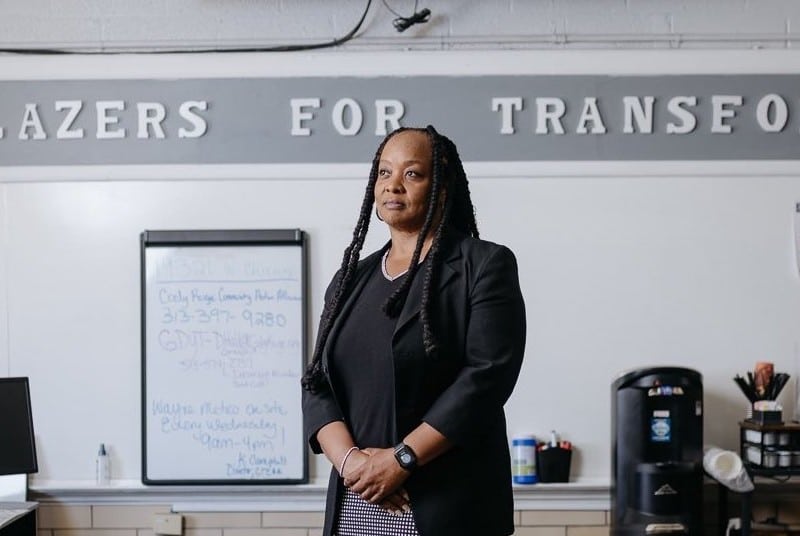Detroit and Ferndale face needs of homeless as they look to improve Eight Mile and Woodward
As local governments of Ferndale and Detroit team up to improve the Eight Mile and Woodward area, homeless people who stay there weigh in on what that future looks like.
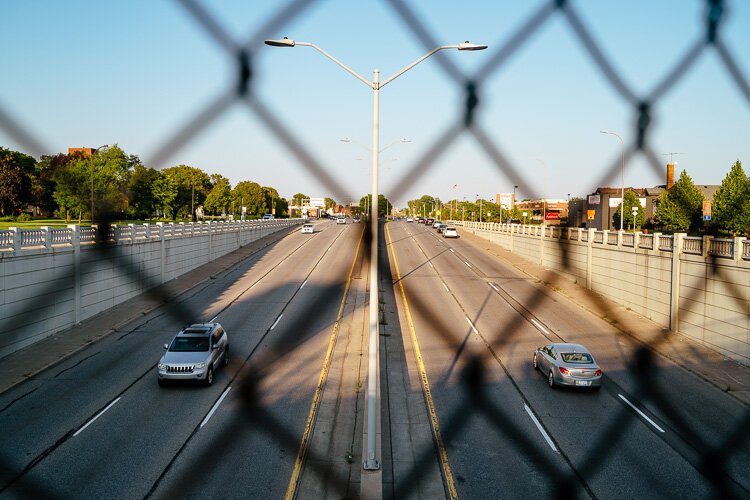
Abraham H spends much of his time at the intersection of 8 Mile and Woodward. He is homeless, and the overpass provides shelter and a home base of sorts. As the local governments of Ferndale and Detroit team up to find solutions to concerns about health and safety to make the area more “welcoming for all,” Abraham has a stake in what that future looks like.
Abraham harbors a general sense of distrust of city officials and groups working to improve the area. He says these groups have not done the work to build trust in the community.
“It’s really a great idea that you guys are going to light this place up and make it more pleasant for everybody, but I really think on the human side of things, you guys are way off base,” he said during a town hall co-hosted by the two cities on Thursday, July 30 to unveil plans for a project that city officials hope will improve the safety and beautify the intersection and get input from the community.

For years residents who live near the intersection of Eight Mile and Woodward have raised concerns about the homeless population who live and panhandle at the underpass, and at the same time, there’s a general sense of distrust among those who seek shelter there toward those in power looking to address their social needs.
“The goal here is to make it welcome to both cities – Detroit and Ferndale – but also, more importantly, to make it inviting, safe and welcoming for all,” Jordan Twardy, Ferndale community and economic development director, said during the meeting.
Beautification and installation of the improvements plan are slated for completion by the end of 2020. This includes adding lighting, artistic features, and signage to the underpass to make it more inviting and welcoming to those using it. Previous improvements made to other intersections in Detroit, such as at Cass and Baltimore and Third and Baltimore, served as an inspiration to the project. City officials also hope to make the intersection a “front door” for both cities by adding in historical aspects to the design.
According to Twardy, the team is taking a multifaceted approach to address both the physical needs of the intersection as well as the human services aspect for people who rely on the underpass for shelter or as a place to panhandle.

Currently, the intersection is seen as unwelcoming by city officials and residents, and they hope this project will “create something that is really great to walk through or drive through or ride your bike through,” according to 8 Mile Boulevard Association Operations Manager Jacob Jones.
While the physical plans were the main part of the community presentation, those attending the town hall were most interested in how the cities will address the homeless population at the Eight Mile and Woodward intersection sensitively and without displacing people.
Residents of the area and nearby neighborhoods have been voicing concerns about the homelessness problem for some time, which is what drove city officials to initiate this project.
“I have children, and our family has been subject to things we should not have to be,” said a Green Acres resident by the name of Michele. “… I do believe that we as residents also deserve to have our concerns addressed. Because of the public health issue, there are families living over here, and we are impacted by this.”
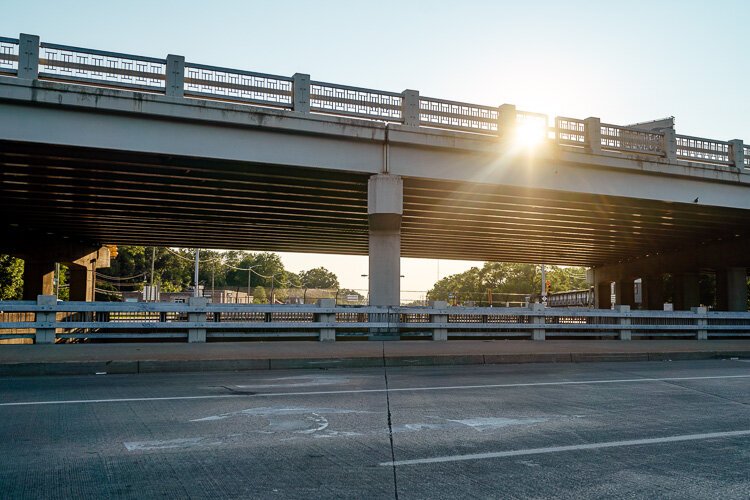
According to city officials, service groups have been doing outreach at the intersection in hopes of learning more about the needs of the individuals there, in addition to working to clean up and maintain the area. They hope to get more information and feedback from the community to increase and improve their service for the homeless people without unnecessarily displacing them.
Aaron Richards, an advocate for people experiencing homelessness who once was homeless himself, mentioned the greater effect the displacement of homeless people can have on the surrounding areas, specifically Detroit.
According to Richards, who used to live and panhandle in the Eight Mile and Woodward intersection, the spot is popular due to the shelter it provides and the amount of traffic it gets. He thinks homeless people who refuse to accept services will most likely disperse into the neighborhoods on the Detroit side of the intersection, which will be a burden on the Detroit city government.
To avoid this, and to bridge the gap between the homeless community and the human services the city wants to provide, Richards suggested working with Gail Marlow with the Motor City Mitten Mission.
“In terms of organizations that actually help people, as someone who was homeless for three years, they are absolutely unparalleled, the work that Gail does,” Richards said. “Gail is the only nonprofit director that I’ve met that was able to build trust in a manner that actually got the homeless community on board with some of the rehabilitation programs.”
Marlow had expressed interest in helping out with the project and being a part of the conversation on the services side of the project. She co-founded Motor City Mitten Mission three years ago, and the nonprofit partners and collaborates with service-based organizations such as churches, schools, and others to serve homeless people through its street outreach and transitional services programs.
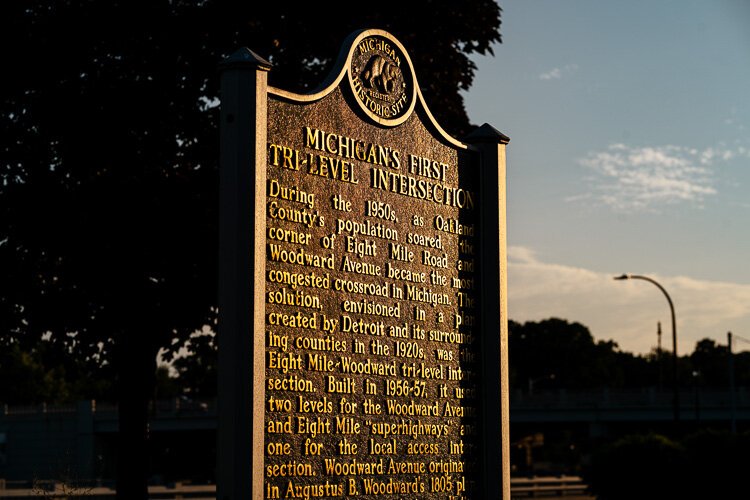
She and her team work closely with Motor City Mitten Mission’s partners to gain the trust of homeless people and get them the help they need.
“A conversation has to start somewhere, and I guess [this meeting is] where it’s happening,” Marlow said. “If they’re going to go forward with this initiative, there are going to be a lot of people that are advocates for the homeless that want to make sure that it is done in a humane [way] and with as much dignity for these people as possible. I don’t think it’s going to be as easy as people think.”
According to Marlow, the best way to address the issues at the underpass is to ensure there are proper services available for the problems each homeless person faces — whether that be mental health resources, substance abuse help, or accessible housing — and the people are willing to accept those services.
Marlow also pointed out that the intersection does not have a more serious homeless problem than other parts of the city, but it is more visible, with its high traffic, lack of abandoned buildings, and popularity with panhandlers.
“It’s not just that area that is affected, there’s a larger area and I get that it’s visible and that a lot of people want to address that since it’s a major roadway,” Marlow said. “But, I think that there’s a lot more in the community that needs to be done than just that corner.”
In terms of the physical side of the project, the cities have teamed up with the nonprofit group the 8 Mile Boulevard Association to help streamline the process. The 8 Mile Boulevard Association has helped facilitate projects between the cities and counties along Eight Mile to improve the area.
“What I want to do is continue to build these working relationships and really like working groups of human service providers,” Jones said. “We’ve really expanded our outreach, in the last couple weeks trying to make sure that we’re talking to the right human service providers and that we’re not just talking to them or we’re actually having them at the table.”
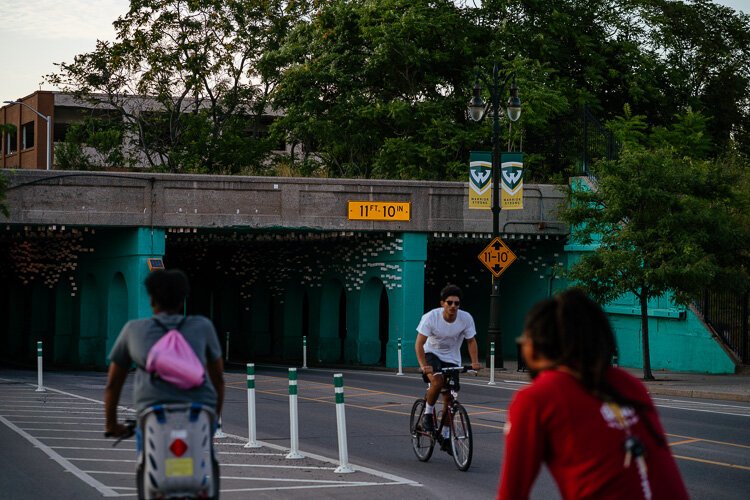
The governments of Ferndale and Detroit will put together a selection committee to pick a plan created by artists and engineers. After a request for proposals (RFP) is sent out, the selection committee will choose the plan that best suits the needs of the intersection. In this selection committee, they hope to include anyone who is affected by the project, including those from each side of the intersection, those involved in human services, and the homeless population.
“We’re hoping that an artist will match up with a structural engineer or an architect and these entities can come together to create something that’s very artistic, very beautiful, but is also structurally sound and safe,” said Detroit Design Director David Walker.
While city officials have yet to announce a deadline for the RFP, they are hopeful that the meeting started a conversation around what the community needs out of the project as a whole.
“Really what we’re for here today is a commitment to address and solve these challenges,” Ferndale Mayor Melanie Piana said. “This is the beginning, not the end. We owe the communities coming back with what we’re gonna try and do.”

